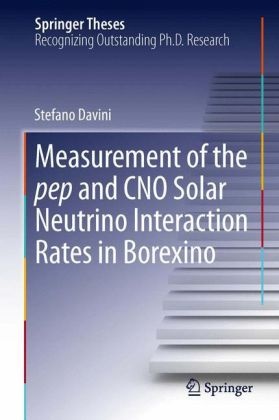Read more
Solar neutrino experiments have proved to be sensitive tools to test both astrophysical and elementary particle physics models. Neutrinos coming from the Sun offer a window into the inner workings of our star. Both the first evidence and the first discoveries of neutrino oscillations have come from experiments which detected neutrinos from the Sun. The Borexino experiment at Laboratory Nazionali del Gran Sasso is designed to perform solar neutrino spectroscopy below 2 MeV. The key feature that allow Borexino to pursue this physics program is its ultra low background level. This thesis is devoted to the first direct measurement of the pep and CNO solar neutrino interaction rates in the Borexino experiment. The detection of the rare signals from pep and CNO solar neutrinos in Borexino requires novel analysis techniques, as the signal interaction rate in the active target is only a few counts per day, while the dominant background in the relevant energy region, the cosmogenic beta+ emitter carbon-11, produced in Borexino by cosmic muon interactions, is about 10 times higher.
List of contents
Neutrino oscillations.- Solar neutrino observations.- The Borexino experiment.- The Borexino detector response and simulation.- Measurement of the pep and CNO solar neutrino interaction rates in Borexino.- Conclusions.
About the author
Stefano Davini's interests lie at the intersection of particle physics, astrophysics and cosmology. His first important research experience was at the Borexino experiment at the Laboratori Nazionali del Gran Sasso, which became the basis for both his undergraduate (2008) and PhD theses (2012). He is currently also involved in the DarkSide experiment at Laboratori Nazionali del Gran Sasso, which aims to use a low backround underground Argon detector and an active neutron veto for the possible detection of dark matter particles.

